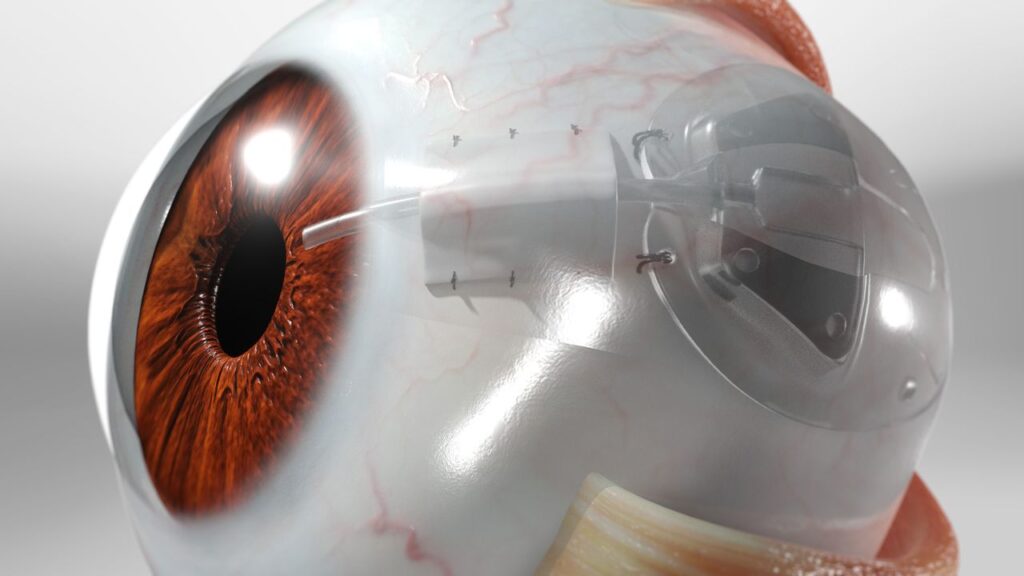Glaucoma Drainage Devices (Tube Shunt Surgery) in the US
Introduction
Glaucoma drainage devices, also known as tube shunt implants, are a major surgical option for patients whose glaucoma cannot be controlled by medications, laser therapy, or trabeculectomy. In 2025, US eye surgeons continue to refine this procedure to improve long-term pressure control and reduce post-operative complications.
This article explores how tube shunt surgery is performed, its success rates, potential risks, cost considerations, and how patients in both the US and Philippines can benefit from this treatment option.
What Are Glaucoma Drainage Devices?
Glaucoma drainage devices are tiny medical implants designed to help excess fluid drain from the eye, lowering intraocular pressure (IOP) and preventing optic nerve damage.
Common types include:
-
Ahmed Glaucoma Valve (AGV) – designed to regulate IOP by using a valve mechanism
-
Baerveldt Implant – offers a larger surface area for long-term pressure control
-
Molteno Implant – one of the oldest, still widely used worldwide
These devices are recommended when trabeculectomy has failed, is not possible, or carries high risk of complications.
How Tube Shunt Surgery Works
The surgery involves placing a small silicone tube into the front chamber of the eye, connected to a plate that sits under the conjunctiva. The device allows fluid to bypass the eye’s blocked drainage system and gradually exit, keeping pressure within a safe range.
The procedure is usually performed under local anesthesia and takes about 45 to 60 minutes per eye. Patients often go home the same day.
Benefits and Success Rates
Tube shunt surgery is considered highly effective for patients with severe glaucoma, particularly those who:
-
Have undergone previous eye surgeries
-
Have secondary glaucoma (such as neovascular glaucoma)
-
Did not achieve IOP control after trabeculectomy
Success rates in the US range from 70–85% within the first 3–5 years after surgery, especially when combined with regular follow-up and post-surgical care.
Possible Risks and Complications
Although generally safe, tube shunt surgery carries some risks, such as:
-
Tube exposure or movement
-
Hypotony (excessively low IOP)
-
Double vision (rare)
-
Infection or scarring that blocks the device
Close monitoring during the recovery phase is essential to maintain proper function of the drainage device.

https://glaucoma.ph/glaucoma-surgery-cost-us-2025/
Recovery and Aftercare
Post-surgery recovery typically lasts 4 to 8 weeks, depending on the type of implant used. During this time:
-
Patients use prescribed eye drops to reduce inflammation and prevent infection
-
Protective eyewear may be recommended
-
Physical activity is limited to avoid disturbing the implant
US clinics emphasize frequent check-ups to ensure the shunt is functioning correctly and to adjust medications if needed.
Cost of Tube Shunt Surgery in the US
The average cost of glaucoma drainage device surgery in the US ranges from $4,000 to $8,000 per eye, including surgeon’s fees, facility fees, and post-operative care. Prices may vary depending on hospital location, surgeon experience, and insurance coverage.
In the Philippines, this procedure is typically more affordable, though availability may be limited to major cities or specialized hospitals.
The Future of Glaucoma Drainage Devices (2025 and Beyond)
Innovations in 2025 are focused on smaller implants, improved materials to reduce rejection risk, and better flow-control mechanisms that minimize complications. Research is ongoing to develop adjustable and minimally invasive shunts, giving patients more customized pressure management.
Conclusion
Glaucoma drainage devices remain one of the most reliable options for patients with severe or treatment-resistant glaucoma. With high success rates, ongoing technological improvements, and proper post-surgical care, tube shunt surgery continues to be a cornerstone of glaucoma management in the US.
If you are considering this procedure, consult a glaucoma specialist to determine whether a drainage device is the best solution for your condition.




